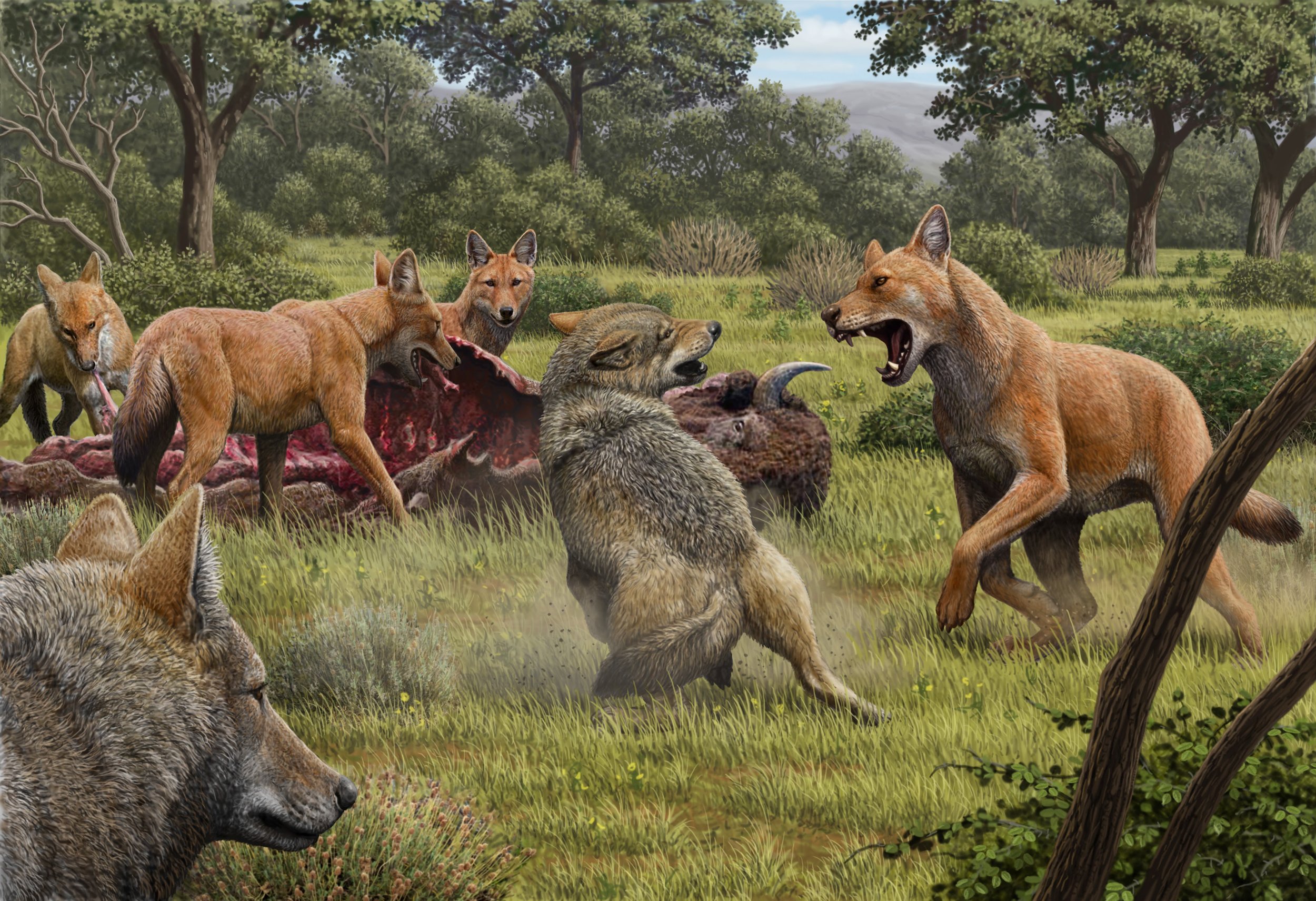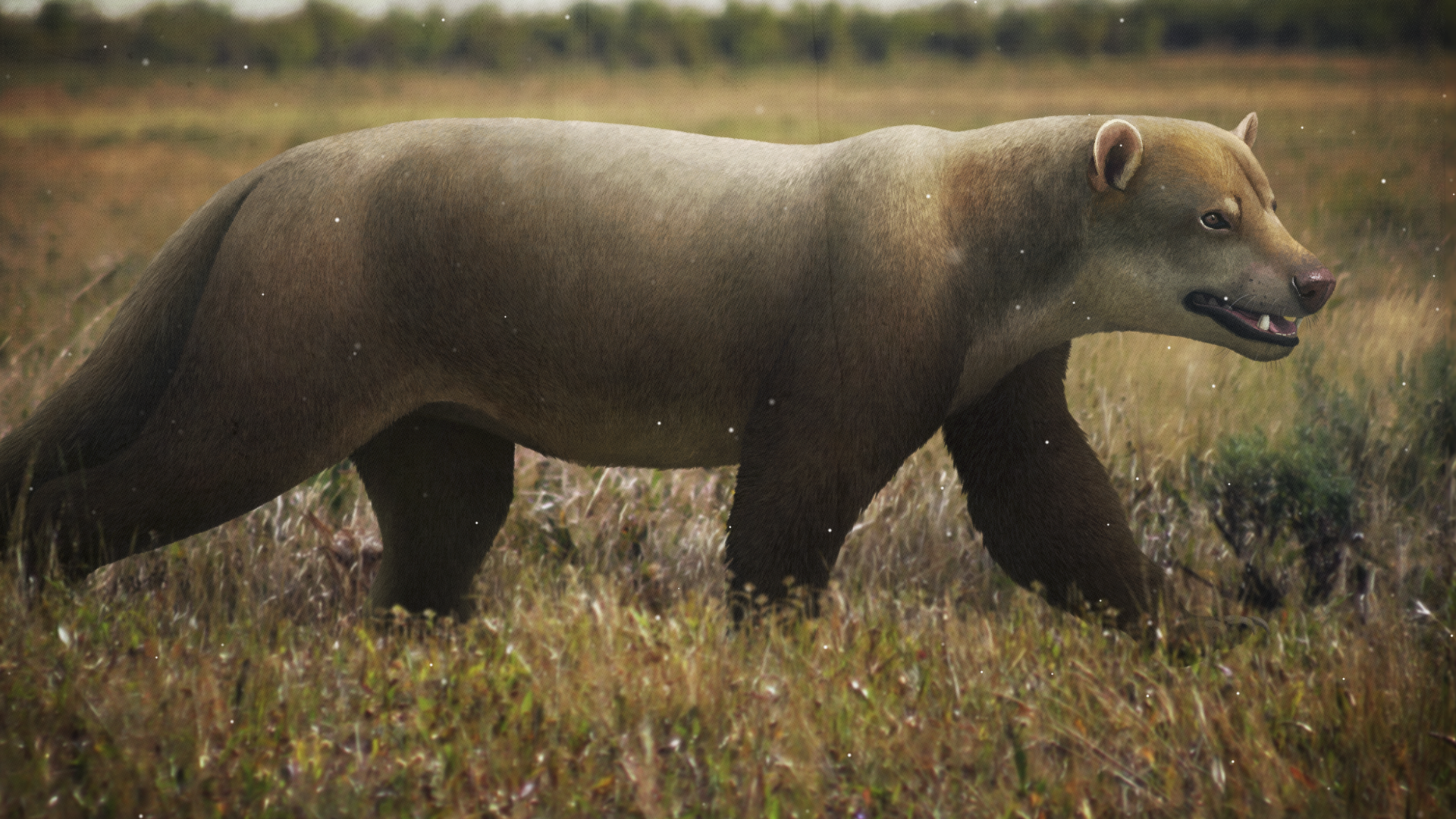The Beast of Gévaudan: The Monster That Terrorized 18th-Century France
It was the early summer of 1764, the south of France, when the beast first made itself known.
The first encounter with the beast happened to a young woman who was tending to her cattle. Her dogs fled in fear, but her courageous cows formed a protective wall to drive off the attacking beast. While she survived, scores of the beast’s other victims did not—a 1987 study by the Norwegian Institute for Nature Research estimated that up to 500 men, women, and children brutally died at the tooth and claw of the Beast of Gévaudan. Throats were targeted. Hearts torn out. Heads decapitated. The beast seemed to kill for sport, leaving mutilated, uneaten corpses in the fields. Even more strangely, the beast rarely, if ever, killed livestock. No. It had a taste for human blood.
The beast was described as the size of a calf up to the size of a horse. Its hide was thick, its fur a ruddy brown. Some survivors described the beast having a stripe down its back, or faint stripes down its sides. The beast’s tail was long and thick, with a tasseled end like that of a lion or hyena. The head was described as large, with a massive mouth and a piglike robustness. It was an ambush predator that was sometimes described as crawling on its belly, getting as close as possible before pouncing—jaws wide, claws lunging—at its victim.
Local hunters first tried hunting the beast. These hunters are reported to have cornered and shot the beast multiple times, usually failing to penetrate its hide. It was as if the beast were supernaturally bulletproof; one encounter described the beast being shot three times, falling each time, and getting right back up. More extraordinary reports claimed the beast walked bipedally, spoke in tongues, laughed at its victims, and peered through windows with glowing, fiery eyes.
In 1765, after a group of seven young friends were attacked by the beast, the French king, Louis XV, made the decision to intervene. 300 French livres were put on the beast’s head. A unit of mounted infantry led by a First Captain Duhamel was sent to Gévaudan to slay the beast. At this point, the Beast of Gévaudan was suspected to be a giant gray wolf. However, Duhamel would describe the beast as being broad as a horse, long as a leopard, and red in color, with a black stripe down its back. It was Duhamel’s belief that the beast was a hybrid of lion and another unknown creature.
[Florida’s Bigfoot: The Legend of the Skunk Ape]
Eventually, Duhamel was ordered to withdraw from the region. Two wolf hunters, Jean Charles Marc Antoine Vaumesle d’Enneval and his more modestly named son, Jean-Francois d’Enneval, replaced him. Unlike Duhamel, who formed raucous, massive hunting parties, the d’Enneval’s believed stealth was essential to killing the beast. For the next four months, the d’Enneval’s slaughtered wolves en masse and made many false claims that the beast had been slain. Eventually, the d’Ennevals themselves were replaced by Francois Antoine, who was essentially the king’s bodyguard, personally sent by the king to kill the maneater once and for all. Antoine brought eighteen men in his hunting party and five wolfhounds chosen from the Royal Pack.
On September 20th, 1765, Antoine tracked a pack of wolves into the Pommier forest, where he and his party came upon an extraordinarily large wolf and killed it. The wolf was measured at 5 foot 7 inches long and 130 pounds. For reference, the average male wolf is 4 to 5 feet long and about 90 pounds. This wolf was named the Wolf of Chazes. Antoine and his son became heroes of Gévaudan and all of France, despite the Wolf of Chazes having no human body parts within its stomach.
No more than two months later, two boys were attacked by the beast. The killings went on, this time without the help of King Louis XV or his military. The locals suffered 30 to 35 more killings and numerous attacks until an unlikely hero, Jean Chastel, took part in an organized hunt. (Ironically, just two years before, Chastel had been arrested on order of Antoine, after Chastel’s son got into a dispute with Antoine’s men over a local bog crossing).
On June 19th, 1767, the 60-year-old Jean Chastel and his fellow huntsmen came across the beast on the slopes of Mount Mouchet. Chastel, who was at the time praying over a rosary, saw the beast, took aim, and fired. The bullets stunned the beast and the dogs mobbed and finally killed it. After three years, the reign of terror of the Beast of Gévaudan was over. The carcass was autopsied and stuffed, the autopsy revealing the remains of the beast’s final victim in its stomach. The beast itself was never identified—only described as having a giant mouth and feet and ears unlike that of a wolf. The killings ceased, and Chastel was celebrated as a hero in Gévaudan, while King Louis XV in Versailles mocked him, believing his Antoine’s Wolf of Chazes to be the real beast.
So, what was the Beast of Gévaudan?
The gray wolf can be ruled out immediately, as the people of France were more than familiar with their local fauna. Even an unusual spike of rabid wolves would still be easily recognized, and no cases of survivors turning rabid were recorded. Some argue that the beast was a serial killer disguised as an animal, pointing to its strange, ritualistic style of killing. Though accounts of the beast playing in the organs of its victims, removing their heads, and targeting humans do sound like the behavior of a depraved killer, hundreds of close encounters happened with the beast; nobody claimed what they saw was anything resembling a human.
Another theory is that the beast was an import: a lion, hyena, or big cat hybrid. Though the piglike head, thick tail, ruddy fur, and black stripe do sound like a hyena, the biggest hyena still tends to be smaller than the average gray wolf. A lion—clocking in between 250 and 550 pounds—certainly matches the supposed size of the beast. The issue with this theory is the volume of nobles that took part in the beast hunts; it could be expected that at least one would’ve recognized the lion, given the apex predator’s prevalence in Europe’s art and imagination. Other more outlandish theories include that Chastel himself had sired a wolf-dog hybrid from his red mastiff and covered it in boar’s hide to be bulletproof, or that imported, hyper-aggressive thylacines (Tasmanian tigers) were responsible.
A few prehistoric species fit the description of the Beast of Gévaudan. Dire wolves, an extinct canine species, are more related to Asian dholes than gray wolves, meaning the beast may have shared their reddish coat. Amphicyonids, also known as the bear-dogs, were prehistoric carnivores that could reach up to 1700 pounds. They possessed terrifyingly large jaws, a wolflike shape, and the robustness of a bear. Another culprit could be the cave hyena, an extinct species of hyena that reached up to 225 pounds. The only issue here is that all of these animals are extinct, with dire wolves dying out 9500 years ago, and bear-dogs and cave hyenas disappearing even earlier. Unless evidence of small, relic populations existing 250 years ago in France is discovered, these theories don’t hold much water.
More fringe speculation opines that the beast is a cryptid (an uncatalogued flesh-and-blood animal), or some sort of paranormal entity. Arizona-based cryptozoologist and host of Monster Radio, Ryan Tremblay, believes the Beast of Gévaudan could’ve been a dogman—an aggressive canine cryptid described as standing between 5 and 8 feet tall, with a wolf’s head, canine legs, and the ability to switch between a bipedal and quadrupedal stance. Though most dogman encounters took place in America, there are historical and contemporary sightings reported in Europe.
[Native American Ghost Stories]
There is also no denying the Beast of Gévaudan’s impact on werewolf lore. Aside from many names involved in the story being used in movies, novels, and television shows, one key, fuzzy, and possibly fabricated detail of the tale is forever ingrained into werewolf mythology. According to some, the bullet used by Chastel to fell the beast was forged of a silver coin or amulet depicting the Virgin Mary. A silver bullet! So it must be a werewolf, right? Well, considering this was the first recorded reference to silver bullets and that the silver was chosen for its religious symbolism rather than its material, no. In this case, the silver egg came before the were-chicken.
The statue that stands today in Auvers, France depicts a young woman, “The Maid of Gévaudan,” burying her spear in the beast’s chest. Portrayed in bronze, the beast is depicted as a massive wolf. But was the Beast of Gévaudan really something so mundane? Could it have been an out-of-place predator hailing from Africa? A serial killer using the beast as a cloak? Or a prehistoric relic, rearing its head once more? Is it too far of a reach to suggest that what happened in Gévaudan was a paranormal occurrence? Did the south of France really have a prowling dogman, or even a demonic entity?
Perhaps the beast was a manifestation. A concoction of the French people’s unrest in the time of tyrannical government, livestock predators, and ancient, superstitious fears. Was it a tulpa born of anxieties and circumstance, let loose to wrought Hell on the fearful peasantry, a demon they themselves had created? If this is true, what else has humanity manifested upon itself? Perhaps all Fortean phenomena can be explained this way. Perhaps in our future we will manifest another beast, begging an even more pressing question: what beasts walk among us now?
Follow Dakota Warren on Instagram.



